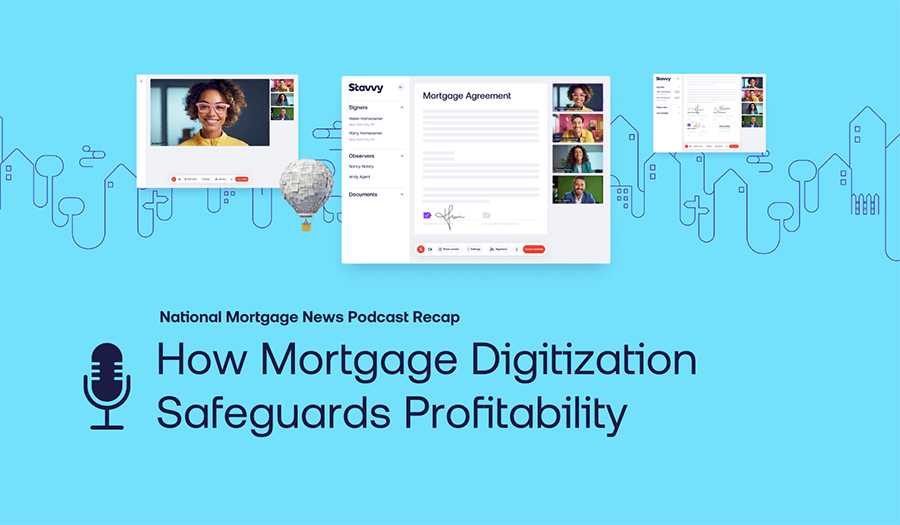One of the toughest challenges for leaders and innovators, regardless of industry, is bridging the gap between today and tomorrow.
A way to approach this challenge in the mortgage and real estate industries is to talk to other leaders and gather informed perspectives as the market changes.
And that’s what I set out to do at HousingWire Annual 2022.
Critical conversations from HousingWire Annual 2022
“All things housing” is an important moniker for HousingWire, as an organization, and HousingWire Annual 2022, which took place this year at the Fairmont Princess in Scottsdale, Arizona, in October.
From the outside looking in, people may think of home buying and refinancing as two functions in the same industry, and they wouldn’t but wrong. However, the reality is that real estate, mortgage, title, insurance, and even appraisal professionals all saw themselves as separate businesses for many years. Increasingly, thanks to technology adoption, these “industries” are all now interconnected and working together to better serve consumers, each other, and the industry at large.
There are a few events every year that bring together wide participation across the real estate finance world, and HousingWire Annual is one of those for many professionals, myself included.
Many technology companies and vendors judge a conference based on how many lender representatives attend. While many lenders attended HousingWire Annual this year, my view of the conference is less about who's there and more about the future.
How do we operate our companies today while preparing for what’s next?
To bridge the gap between today and tomorrow, I listened to several panels, including the Regulatory Super Panel that Stavvy's Angel Hernandez moderated, and picked the brains of successful mortgage and real estate professionals. Here is the inside track of those very conference conversations.
1. The volume effect
A frequent topic among attendees and panelists was the cyclicality of real estate. It's been over ten years since the last cycle, and the questions of handling higher rates and lower volumes took several forms.
One mortgage CEO said you have to be able to cut costs to survive. It’s the tough choices that allow some to endure. The same CEO added that it is just as important not to sit on money (if you have it) to “win” this market. Discipline to cut costs—from reducing workforce to eliminating entire channels of business—was discussed throughout the conference. The wholesale mortgage channel was the most common example of companies exiting a business area.
The next response to this timely question involved innovation.
For some, the jury is still out on whether lower volume allows lenders more time (and resources) to adopt new technology and processes. However, in my mind, the verdict has never been more apparent. The answer is yes, assuming the efficiency gained is also immediately reflected in a lower cost to originate. That may seem obvious to you, but less recognizable is that innovation also opens up opportunities to partner with new business relationships and technology providers.
Lenders always look for customers via new lead sources or business relationships; however, those sources don’t generally include new technology. Instead, lenders are looking to apply technology to their loan manufacturing process, for instance, using service providers to identify and extract data on PDFs or digital documents. Another example is using technology to create better integrations for faster collaboration.
Lead generation, digital documents, nonQM, and title orders, were other areas that continued to gain attention at this year’s conference.
2. Differentiate on relationships and experience
It is not enough to “focus on purchase” as if it were a new shift. Meaningful value discovered through novel partnerships has the potential to generate new customers and/or create new customer journeys.
Consolidation and integration of different types of consumer data software can be seen in how Customer Relationship Management (CRM), sales software, and consumer digital behavior data are coming together. In some cases, these companies are merging or becoming affiliates, and in others, co-packaging an offering to ensure lenders have an easier time adopting new tech.
This trend is limited, in some ways, to the point of sale (POS) and consumer data experience so far, but I see it expanding quickly into other parts of the transaction. For instance, the closing experience is where differentiation has long been defined by the title agent or company that supports real estate and mortgage partners. Increasingly, the coordination of all the moving parts of a real estate closing and the focus on the consumer experience as part of the process have brought renewed attention to closing workflows. (And I’m not just saying this to set up Stavvy.) The ability for service providers to work together or “ecosystems” of integrated services is a key strategy discussion that came up again and again.
The future is not the loan origination system (LOS) that expands the lifecycle of a loan. The future is seamless workflows between the limited universe of providers and tech companies that the lender selects for their particular needs.
Truth data (i.e., verified and protected data from the source) is one key that will unlock this future. Another is the frequency and familiarity of tech companies working together to solve problems for lenders, banks, and credit unions. Lenders should be able to select an entire loan process based on the different combinations of providers they trust or want to work with. This concept is not that different than matching up which flights fit your needs on a travel aggregation site, like Expedia or Kayak.
There are already existing integrations of four to five providers from POS to loan delivery, and you can select the right combination out of a universe of 20, 50, or 100 providers. While many providers agree to participate in seamless integration, this is not happening today at scale. Still, the momentum is building, particularly among companies who find themselves frequently with the same mutual clients.
3. Let’s talk about fair lending
Another important conversation is fair access to housing and credit.
Fair lending can be a broad topic with several applications and implications. Many lenders see fair lending as a two-sided coin. On one side, the threat of lending patterns data implying that a lender did not generate enough loans in one area or another represents a risk. Sometimes, that risk may be warranted depending on a complex and deep set of variables. In other cases, lenders who genuinely intended to reach underserved communities and generate business from underserved consumers worry their efforts will not be reflected in data or will not be trusted by the regulator.
On the other side of the coin, this moment in the market creates opportunities for innovation that helps reach new home buyers. Lenders can use Special Purpose Credit Programs to address the intent to reach more people while documenting and managing the regulatory risk. One example of expanding access to credit discussed at the conference was positive monthly rent payments. Rent payments can be used as supplemental support for a consumer’s mortgage application. Not surprisingly, monthly rent payment history is a key indicator of mortgage repayment risk, and, more surprisingly, it has not been included in traditional mortgage underwriting.
A key panel and significant topic of HousingWire Annual 2022 was anticipating and preparing for how fair lending would influence technology, innovation, and revenue. At Stavvy, we are approaching this challenge in two ways. First, we ensure that our platform delivers access to the consumers’ point of need because many consumers cannot take time off work or afford on-demand child care and must be able to dictate the ideal process for their lifestyle. Second, we lower the cost of the transaction overall. As a result, investors, lenders, and capital markets can pass on significant savings to consumers.
Final thoughts from HousingWire Annual 2022
My key takeaway from HousingWire Annual 2022 is this—strategic perspective will help Stavvy plan for the next 6-12 months. We’re thinking about how to drive eClosing adoption, partner with other companies that serve our lenders, and make sure we connect and unify the housing industry. Thank you, HousingWire Annual 2022, for having us and helping us create new partnerships and identify key priorities for 2023.
Learn more about how the  is taking real estate beyond documents.
is taking real estate beyond documents.



![[Webinar Recap] Advancing Your Digital Default Servicing Strategy](https://blog.stavvy.com/hubfs/advancing-your-digital-default-servicing-strategy-blog-recap.png)